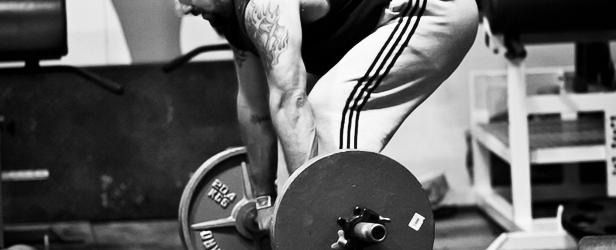
Hamstring injuries are common but mostly avoidable. Like many other injuries, they aren’t 100 percent preventable, but there are many ways to help reduce the occurrence in your athletes. If hamstring pulls do take place, I’ve added some treatment guidelines at the end. However, this doesn’t mean that your athletes shouldn’t seek medical assistance. A physician should always be consulted first.
The common causes of hamstring knots, stains, and tears are mineral imbalances, muscle imbalances, dehydration, biomechanical problems, and overtraining. Obviously, nutrition is important to prevent hamstring issues. Eating a proper diet and getting the adequate amount of water each day can reduce the onset of muscular problems. Some coaches and trainers believe that muscle imbalances (quad/hamstring ratio) are the biggest cause of hamstring injuries. However, from my experience, this doesn’t seem to be the case. With a properly designed program, I haven’t seen strength deficits cause any hamstring pulls.
Biomechanical issues are a huge cause of hamstring problems. Athletes who break at the hips when running (anterior pelvic tilt) are prone to these injuries. In this case, because the hamstring is attached to the hip, hamstring length is affected. If the hip is anteriorly tilted or rolled forward, the hamstring will be in a lengthened position. The hamstring needs to be able to handle a rapid and forceful stretch generated by ground contact when running while at the same time extending from the hip. If the hamstring is already in a lengthened position and then has to handle this additional tension beyond what it normally should handle, serious problems can occur.
An anterior pelvic tilt also changes where the foot makes contact in relation to the center of mass (COM). Poor ground contact position out in front of the COM puts the hamstring at risk for problems. If the athlete’s foot is striking done out in front of the COM, this causes a breaking force that will not only slow the athlete down but also create tremendous force on the hamstring. Striking out in front of the COM also means that the foot is plantar flexed (toe pointed out). If the toe is pointed, the hamstring works as a knee flexor during recovery and inhibits the swing phase, which causes hamstring fatigue. By keeping the toe up, it reduces hamstring fatigue by using the gastrocnemius as a knee flexor. So if the toe is pointed and striking way out in front of the COM, the hamstring will become fatigued earlier and a shearing force will be created on the hamstring during every step.
Overtraining is another common reason for hamstring-related problems. Programs that either have too many speed days in a row or constantly mix energy systems don’t allow athletes an adequate amount of recovery time. This is also true for programs with a speed day on one day and heavy central nervous system lifts on the “recovery” day. Be careful of introducing too much volume on recovery days because the body will still be in a fatigued state the following day. If this day happens to be a speed day (or heavy CNS day), muscle pulls will more likely occur. If an athlete isn’t well rested and is then expected to create a lot of force using tired muscles, you’re asking for injuries. Proper recovery is the most important aspect of training.
Treatment
(Note: This isn’t meant to replace physician guidance.)
To treat hamstring injuries, massage the area and do light stretching (for knots or if it doesn’t aggravate the hamstring). The R.I.C.E. method—rest, ice (20 minutes on and off), compression, elevation—is useful as well.
Use ice compresses to stop the internal bleeding immediately following the injury. Don’t apply heat right after the hamstring pull because it promotes bleeding to the injury site. Don’t take aspirin immediately after the injury for the same reason (it promotes additional bleeding to the affected area). EMS can be used above the injury site to promote blood flow.
The day after the injury, you can begin one-legged work. Perform a one legged march and skipping with the uninjured leg. Other exercises can be used as long as the hamstring isn’t actively engaged. Depending on the rate of recovery of a mild strain, we begin using both legs after three days of total rest. Both legs are used for marching and in the A series (march and skip) for short distances. Speed work is also slowly introduced.
Gerard Mach has had success using 10 X 10 meters to start. Depending on the recovery time, you can increase the volume and the distance (five meters at a time). The hamstring won’t act up until you really open up your stride so don’t increase the distance too quickly. Using this active recovery process instead of just resting completely helps alleviate the build-up of scar tissue. The limited accelerations help to maintain and maximize speed without putting too much strain on the hamstring by opening up the stride length.
Elite Fitness Systems strives to be a recognized leader in the strength training industry by providing the highest quality strength training products and services while providing the highest level of customer service in the industry. For the best training equipment, information, and accessories, visit us at www.EliteFTS.com.








